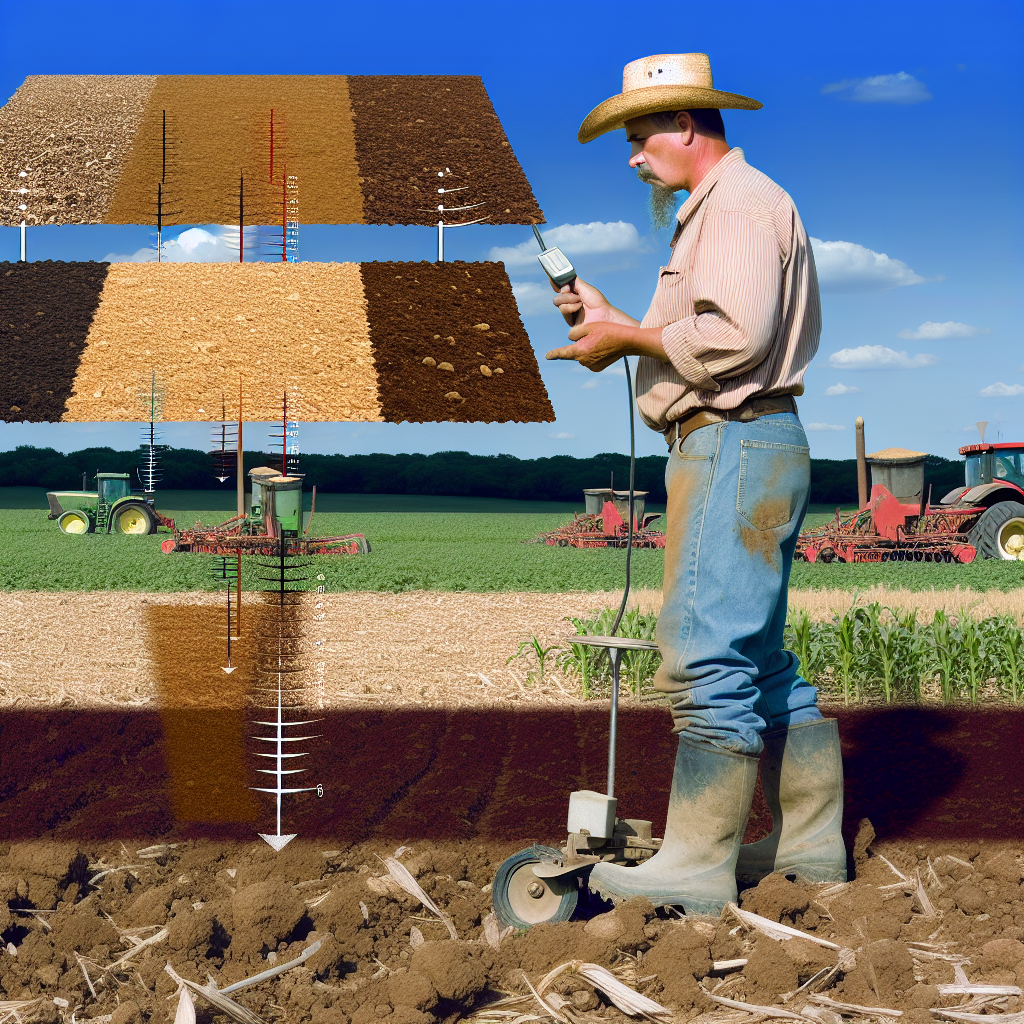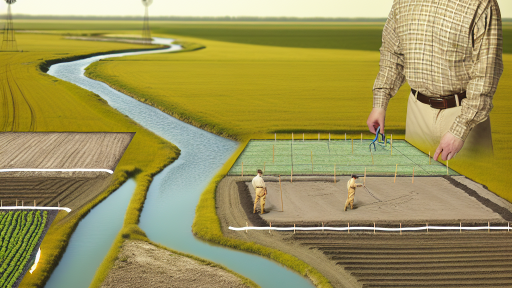Introduction to Soil Health and Its Importance in Agriculture
Soil health plays a crucial role in agriculture.
It influences crop productivity and sustainability significantly.
Healthy soil contributes to overall ecosystem balance.
It provides vital nutrients to plants and improves water retention.
Healthy soils also support beneficial microorganisms and organic matter.
These factors collectively enhance plant growth and yield.
Moreover, improving soil health helps in carbon sequestration.
This process mitigates climate change effects effectively.
Conversely, degraded soil can lead to reduced fertility.
This degradation increases vulnerability to pests and diseases.
Therefore, farmers must prioritize soil health management.
Effective crop rotation is a key strategy for maintaining soil vitality.
It helps prevent soil nutrient depletion and pest cycles.
In summary, healthy soil is foundational for productive agriculture.
Investing in soil health fosters sustainable farming practices.
Transform Your Agribusiness
Unlock your farm's potential with expert advice tailored to your needs. Get actionable steps that drive real results.
Get StartedThe Role of Crop Rotation in Enhancing Soil Health
Crop rotation involves alternating different crops on the same land.
This practice can significantly improve soil composition.
Different crops have varying nutrient requirements.
Rotating crops prevents nutrient exhaustion in the soil.
For instance, legumes enhance soil nitrogen levels.
In contrast, deep-rooted crops can break up compacted soil layers.
Additionally, crop diversity disrupts pest and disease cycles.
This reduces reliance on chemical pesticides and fertilizers.
Consequently, crop rotation promotes ecological balance.
Farmers can implement these rotations with careful planning.
Choosing the right crops for rotation is vital for success.
Overall, utilizing crop rotation is beneficial for soil health.
Understanding Crop Rotation
Definition
Crop rotation involves alternating different crops on the same piece of land.
This practice aims to improve soil health and fertility.
Farmers have used it to manage pests and diseases effectively.
Overall, it enhances agricultural productivity.
Historical Context
Crop rotation has a long and rich history in agriculture.
Ancient civilizations, such as the Romans, practiced it extensively.
They understood the benefits of rotating their crops for soil sustainability.
Furthermore, early agronomists documented these methods to share with others.
As agriculture evolved, so did the techniques of crop rotation.
Today, modern farmers continue to adopt these time-tested practices.
Consequently, crop rotation remains a fundamental aspect of sustainable farming.
The Role of Crop Diversity in Enhancing Soil Nutrients
Improving Soil Structure
Crop diversity plays a vital role in improving soil structure.
Showcase Your Farming Business
Publish your professional farming services profile on our blog for a one-time fee of $200 and reach a dedicated audience of farmers and agribusiness owners.
Publish Your ProfileDifferent root systems create a more complex network in the soil.
This network helps prevent soil compaction and promotes aeration.
Moreover, various crops can contribute to organic matter in unique ways.
Boosting Nutrient Availability
Different plants have varying nutrient requirements.
Some plants can extract nutrients from deeper soil layers.
Legumes, for example, enrich the soil by fixing nitrogen.
This natural process improves nutrient availability for subsequent crops.
Minimizing Pest and Disease Incidence
Crop rotation reduces the buildup of pests and diseases.
Planting a diverse array of crops disrupts the life cycles of harmful organisms.
This practice also enhances the resilience of the ecosystem.
Healthy soil organisms can combat pest problems effectively.
Enhancing Biodiversity
Incorporating different crops promotes overall biodiversity.
Biodiversity encourages beneficial microbial activities in the soil.
It creates a balanced environment that supports various forms of life.
Healthy microbes contribute to nutrient cycling and soil fertility.
Implementing Effective Crop Rotation Strategies
Choosing compatible crops for rotation can optimize soil health.
Farmers should consider both annual and perennial plants.
Integrating cover crops also helps retain moisture and reduce erosion.
This strategy can lead to healthier and more productive soils.
Learn More: Integrating Renewable Energy Into Farm Planning Designs
How Crop Rotation Reduces Pest and Disease Pressure
Understanding Pest Life Cycles
Pest populations thrive under certain conditions.
Crop rotation disrupts their life cycles effectively.
This disruption reduces their ability to reproduce.
It also minimizes the chances of infestations.
Diversifying Plant Species
Different plants attract varied pests.
By rotating crops, farmers can confuse and deter pests.
For instance, planting legumes can disrupt nematode populations.
This diversity creates a less favorable environment for specific pests.
Breaking Disease Cycles
Many diseases are crop-specific.
Crops that are rotated can help mitigate disease outbreaks.
For example, rotating cereals with broadleaf crops reduces wheat diseases.
This strategy starves pathogens of their preferred hosts.
Enhancing Soil Biodiversity
Crop rotation promotes soil microbial diversity.
This increased biodiversity can suppress soil-borne diseases.
Beneficial microbes compete with harmful organisms.
As a result, the risk of disease establishment decreases significantly.
Utilizing Natural Pest Controls
Some crops attract beneficial insects.
These insects can naturally control pest populations.
Planting cover crops can enhance this effect.
This approach reduces the need for chemical pesticides.
Showcase Your Farming Business
Publish your professional farming services profile on our blog for a one-time fee of $200 and reach a dedicated audience of farmers and agribusiness owners.
Publish Your ProfileBest Practices for Crop Rotation
Farmers should plan their rotations carefully.
Consideration of plant families is crucial.
Avoid repeating the same family in consecutive years.
This practice enhances the overall effectiveness of crop rotation.
Find Out More: Water Conservation Strategies In Sustainable Farm Design
Best Practices for Implementing Crop Rotation in Different Soil Types
Understanding Soil Types
Soyl types greatly influence crop rotation decisions.
Clay, sandy, and loamy soils each have unique characteristics.
Identifying these characteristics is crucial for effective planting.
Crafting a Crop Rotation Plan
Create a clear rotation strategy based on soil type.
Incorporate diverse plants to improve soil health.
Consider plant families and their nutrient needs.
Rotate deep and shallow rooting plants effectively.
Implementing Crop Rotation in Clay Soils
Clay soils retain moisture but drain poorly.
Utilize plants that enhance drainage and structure.
Choose legumes to fix nitrogen in the soil.
Follow with crops like corn or beans that benefit from enriched soil.
Implementing Crop Rotation in Sandy Soils
Sandy soils drain quickly but retain fewer nutrients.
Plant cover crops during off-seasons to prevent erosion.
Utilize nitrogen-fixing plants to enhance soil fertility.
Pair these with crops like cucumbers or peppers for better yields.
Implementing Crop Rotation in Loamy Soils
Loamy soils balance moisture retention and drainage.
This type supports a wide variety of crops.
Incorporate diverse crop families for nutrient maximization.
Rotate grains, legumes, and root vegetables for optimal health.
Monitoring and Adjusting Practices
Regularly assess soil health after each rotation cycle.
Observe plant growth and pest levels for signs of imbalance.
Be prepared to adjust plans based on environmental changes.
This ensures continued productivity and soil vitality.
Delve into the Subject: Advantages of Diverse Crop Systems

Case Studies: Successful Crop Rotation Strategies Across Various Regions
Midwest United States: Soybean and Corn Rotation
Farmers in the Midwest often use soybean and corn in rotation.
This combination improves soil structure and nutrients.
Specifically, soybeans fix nitrogen, benefiting corn’s growth.
Moreover, this practice reduces pest issues over time.
Southern Australia: Wheat and Legumes
Southern Australian farmers integrate wheat with various legumes.
This strategy enhances soil fertility significantly each season.
For instance, legumes add nitrogen back into the soil.
Consequently, wheat yields improve, promoting sustainability.
Western Europe: Brassicas and Cereal Grains
In Western Europe, crop rotation often includes brassicas and cereal grains.
Farmers enjoy enhanced soil health and lower disease rates.
Brassicas break disease cycles, particularly in cereal crops.
Showcase Your Farming Business
Publish your professional farming services profile on our blog for a one-time fee of $200 and reach a dedicated audience of farmers and agribusiness owners.
Publish Your ProfileHence, this rotation leads to healthier ecosystems overall.
Eastern Africa: Intercropping with Cassava
In Eastern Africa, farmers frequently intercrop with cassava.
This approach builds resilience against pests and weather fluctuations.
Additionally, it maximizes land use and crop diversity.
Farmers report significant improvements in food security as a result.
North India: Diversifying with Pulses and Grains
Northern Indian farmers diversify crops using pulses and grains.
This practice increases soil fertility and crop yields sustainably.
Pulses enrich the soil with essential nutrients after each harvest.
As a result, farmers benefit from improved economic returns.
Learn More: Gray Water Recycling Techniques for Agricultural Use
Innovative Technologies and Tools for Planning Crop Rotations
Utilizing Software Solutions
Modern farming increasingly relies on software to plan crop rotations.
These tools analyze soil health, weather patterns, and crop yields.
Farmers can utilize platforms like Agrian or Climate FieldView.
Such software provides data-driven insights for better decision-making.
Moreover, they help track crop performance over time.
Embracing Mobile Applications
Mobile apps have become vital for farmers on the go.
Applications like FarmLogs or CropPlan allow easy planning.
Farmers access real-time information right from the field.
These tools enable quick adjustments to crop plans as needed.
Consequently, they enhance on-farm efficiency and productivity.
Leveraging Precision Agriculture
Precision agriculture technologies optimize crop rotations effectively.
Sensors and drones gather crucial data about soil conditions.
This information helps identify the best crops for specific areas.
Additionally, it reduces waste by applying resources more accurately.
Thus, farmers can make informed choices for crop rotation schemes.
Integrating Data Analytics
Data analytics plays a critical role in modern crop planning.
Farmers analyze historical data to forecast future performance.
This approach helps them understand the long-term impact of rotations.
Tools like IBM Watson Decision Platform aid in complex analysis.
With these insights, farmers can design sustainable crop systems.
Collaboration with Agricultural Specialists
Engaging with agronomists and crop specialists supports better planning.
They provide expertise tailored to local soil and climate conditions.
Specialists can recommend effective crop rotations based on research.
Furthermore, they can advise on integrating innovative technologies.
Ultimately, collaboration enhances overall farm productivity and sustainability.
Challenges and Solutions in Adopting Effective Crop Rotation Systems
Common Challenges Faced by Farmers
Farmers encounter several challenges when adopting crop rotation systems.
For instance, knowledge gaps often hinder effective implementation.
Many farmers lack awareness of the benefits that rotation offers.
Additionally, traditional farming practices may be deeply ingrained.
This resistance to change can result in lower adoption rates.
Showcase Your Farming Business
Publish your professional farming services profile on our blog for a one-time fee of $200 and reach a dedicated audience of farmers and agribusiness owners.
Publish Your ProfileWeather variability further complicates crop planning.
Climate impacts can disrupt established rotation patterns.
Addressing Knowledge Gaps
Educational outreach is critical to overcoming knowledge gaps.
Workshops and training sessions can help farmers understand crop rotation.
Including success stories from peers may boost enthusiasm.
Farmers should also have access to resources and research data.
Encouraging Adoption Despite Tradition
Promoting the benefits of crop rotation can help challenge traditional practices.
Using demonstrations on local farms can show practical applications.
Collaboration with agricultural extension officers can support farmers.
Providing financial incentives might encourage trial of new methods.
Mitigating Weather-Related Challenges
Farmers can mitigate weather-related challenges through strategic planning.
Diverse crop choices offer resilience against adverse conditions.
Implementing contingency plans for unusual weather patterns can also help.
Moreover, technology can assist in better predicting weather trends.
Continual Assessment and Adaptation
Continuous assessment of crop rotation practices is essential.
Farmers should routinely evaluate the effectiveness of their rotations.
Collecting data on yields can guide future decisions.
Adapting practices based on feedback promotes sustainability.
Additional Resources
Cover Cropping to Improve Climate Resilience | USDA Climate Hubs
An Economic Perspective on Soil Health | Economic Research Service




